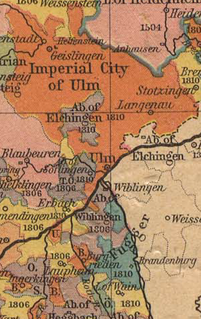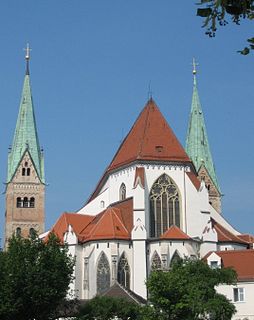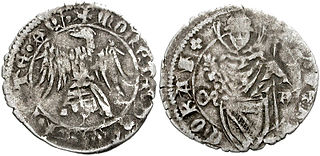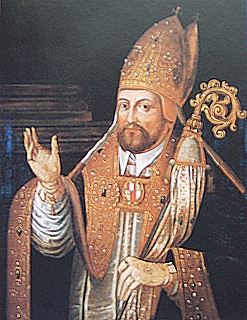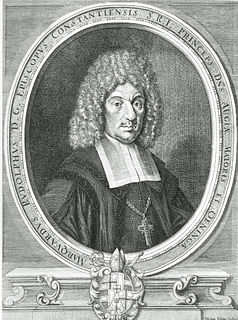Biography
Marquard von Berg was born in Öpfingen in 1528. [1] At the age of 13, he was sent to study at the University of Ingolstadt, where he remained until 1545. [2] Starting in 1548, he studied law at the University of Padua and the University of Pavia. [2] In 1551, he interrupted his studies to take over the parish church in Langweid am Lech. He then completed his studies, graduating in 1554. [2] In 1559 he became provost of Bamberg Cathedral. [2]

Öpfingen is a municipality in the district of Alb-Donau in Baden-Württemberg in Germany.

The University of Ingolstadt was founded in 1472 by Louis the Rich, the Duke of Bavaria at the time, and its first Chancellor was the Bishop of Eichstätt. It consisted of five faculties: humanities, sciences, theology, law, and medicine, all of which were contained in the Hoheschule. The university was modeled after the University of Vienna. Its chief goal was the propagation of the Christian faith. The university closed in May 1800, by order of the Prince-elector Maximilian IV.

Law is a system of rules that are created and enforced through social or governmental institutions to regulate behavior. It has been defined both as "the Science of Justice" and "the Art of Justice". Law is a system that regulates and ensures that individuals or a community adhere to the will of the state. State-enforced laws can be made by a collective legislature or by a single legislator, resulting in statutes, by the executive through decrees and regulations, or established by judges through precedent, normally in common law jurisdictions. Private individuals can create legally binding contracts, including arbitration agreements that may elect to accept alternative arbitration to the normal court process. The formation of laws themselves may be influenced by a constitution, written or tacit, and the rights encoded therein. The law shapes politics, economics, history and society in various ways and serves as a mediator of relations between people.
He was elected Prince-Bishop of Augsburg on 26 July 1575 and Pope Gregory XIII confirmed his appointment on 24 September 1575. [1] He was ordained as a priest on 8 December 1575. [1] Michael Dornvogel, auxiliary bishop of Augsburg, consecrated him as a bishop on 15 January 1576. [1]

Pope Gregory XIII, born Ugo Boncompagni, was Pope of the Catholic Church from 13 May 1572 to his death in 1585. He is best known for commissioning and being the namesake for the Gregorian calendar, which remains the internationally accepted civil calendar to this day.

An auxiliary bishop is a bishop assigned to assist the diocesan bishop in meeting the pastoral and administrative needs of the diocese. Auxiliary bishops can also be titular bishops of sees that no longer exist.
A bishop is an ordained, consecrated, or appointed member of the Christian clergy who is generally entrusted with a position of authority and oversight.
He died in Dillingen an der Donau on 29 January 1591. [1]

Dillingen, or Dillingen an der Donau is a town in Swabia, Bavaria, Germany. It is the administrative center of the district of Dillingen.

